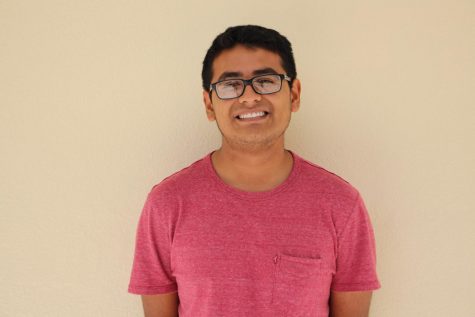Alex Luna: Reader to Leader
February 13, 2018
When I was in fourth grade, I was one of the top readers in my grade. Compared to my classmates, I was reading and comprehending more books. Despite this, the teachers forced me to join a reading support group. Until this day I’ve wondered about that: why was I forced to join a class that I clearly didn’t need?
In my freshman year Biology Honors class, I was one of the only Latinos. At the time, the color of my skin wasn’t something I thought of consciously or regularly. That was until I began to struggle with cell walls and carbohydrates. I soon thought: why am I struggling when it seems like everyone else does well effortlessly? The most obvious difference was the color of their skin. I never thought about one’s color that much, mostly because in middle school everybody took the same classes so there were more people like me. There was no racial barrier between students of higher academic ability. But then, I became anxious that people like me — with my skin color — were just not meant to do well. It seemed to be the only answer I could find.
I began to notice similar trends in my other AP and honors classes as the years went on. Being one of the only minorities made me undermine my own abilities because I noticed that I struggled more compared to others. Classes became more difficult because of these anxieties caused by the racial imbalance. I will admit, my early school education wasn’t the best either. Nevertheless, this social isolation led to a decrease in my confidence and motivation to continue taking these classes.
Despite this negative mindset, I signed up for these courses because my teachers were supportive and encouraged me to challenge myself. Eventually, my anxieties faded away as I caught up to my peers through hard work. But the issue with racial imbalances in classrooms hasn’t gone away yet. Race ultimately shouldn’t be a determining factor in whether one will do well in a higher-level class. Not just in terms of students’ mindsets, but also in terms of how teachers treat racial minorities in classes.
The school needs to know how to talk about this separation of diversity while not putting a spotlight on one group, because we all know which group that tends to be. Receiving special attention may be well-intentioned, but it makes us feel that we are at a disadvantage and always will be. It sometimes feels like this spotlight means we can do nothing without the attention. We feel unwelcome and out of place.
In AVID, there are many of us that take difficult courses. What most people forget is that we are all just a regular group of students who want to challenge ourselves and use AVID as a platform to achieve the same type of success as our peers. We don’t need any special spotlight on us more than what AVID provides. That just makes it so there has to be a distinction between us and our peers.
Beyond teachers, it’s also a question of our own mindsets. Today, I am the only Latino in my AP Literature class. Does it discourage or make me feel bad about myself? No, not in the slightest. I’ve come to realize that I should be proud and not ashamed of my background. As a lower-income student, I didn’t have access to the same types of resources like tutors, making it much more difficult for me and my older sister to catch up to everyone else — especially with immigrant parents who were also trying to find their place.
One shouldn’t feel ashamed of their background, but instead use it as motivation to work harder. We shouldn’t be scared to be the only ones like us in our class.
Instead, we should realize that if we can do it, others like us can and will follow our lead. Minorities make up a large population of our school, but you wouldn’t know that if you stepped into an honors or AP course. That’s why we need to make a change.
Luckily, Los Altos has already made the first step: recognizing the problems. With programs like AP Success, there has been a genuine effort to fix this imbalance. But the issue with spotlighting persists because it puts an isolating attention on minorities.
I wish I could give a clear-cut solution, but I can’t because this problem goes beyond just the classroom. There is also an internal element to it, one that hovers over minority students because knowing they’ll have to work harder makes these courses less appealing to take. For now, to any fellow underrepresented student, don’t think you are not capable. Don’t let the color of your skin be a limiting factor. Instead, be proud of where you came from and where you can go because Los Altos is a place that can give you those opportunities.

